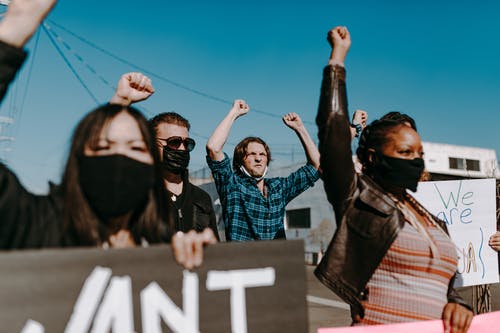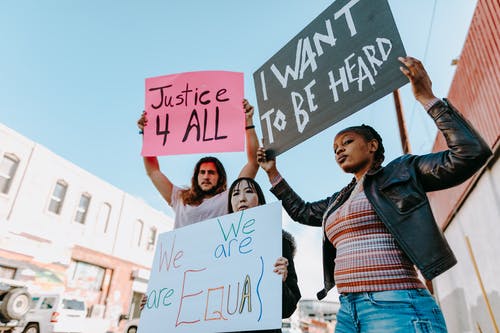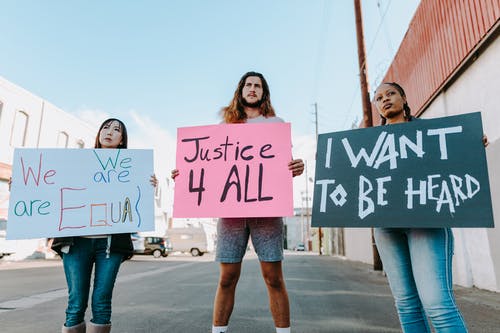|
The brutal police killing of 13-year-old Adam Toledo in Chicago has us reflecting on how much more likely our students are to experience violence than their US Citizen peers, simply because of where they were born and the color of their skin. Immigrant children are much more likely to experience school violence than their non-immigrant peers (Peguero 2008). Newcomers in particular face a heightened risk: first-generation immigrant students are the most likely of all students to feel unsafe at school (Peguero 2008). One study found that immigrant students are “significantly more likely to experience one or more forms of bullying than their U.S.-born counterparts, even after controlling for a number of demographic variables” (Maynard 2016). That same study found that immigrant students are more likely to report being bullied based on “racial/ethnic differences” than their non-immigrant peers (Maynard 2016). Specifically, immigrant children are more likely to report instances of being “kicked, hit, or pushed,” “bullied due to race,” “bullied due to religion,” “bullied by computer/email,” and “bullied by cell phone,” when compared to US-born children (Terzis 2018). The experiences of students who participate Project Libertad’s newcomer after-school programs demonstrate how this anti-immigrant dynamic plays out as school violence locally. Project Libertad’s students, some as young as fifth grade, report physical violence, threats, and intimidation perpetrated against them by other youth because of their race and immigration status. Project Libertad students also report discrimination based on language. Spanish-speaking students report other students bullying them with comments like, “This is America, so speak English!” or “Build the wall!” Both teachers and students report “fight clubs,” in which large groups of students bully and physically attack other vulnerable students. The violence doesn’t end with bullying — Immigrant youth are more likely to face violence and discrimination from police, School Resource Officers (“SROs”), and school security guards than their US-born peers. School security staff may unfairly discriminate against newcomer students due to cultural differences and implicit racial biases. Meant to protect the campus from potential threats, SROs are not supposed to be involved in disciplining students unless an incident rises to the level of a criminal matter (ILRC 2018). However, schools with SROs are likely to have a greater level of law enforcement involvement and arrests of students than schools without SROs (ILRC 2018). Students in policed schools are criminalized for behaviors that may annoy adults but are a typical part of adolescent development; this dynamic can mean that a perceived school rule violation ends up being treated as a crime (ACLU 2017). SROs and security guards lack proper training regarding the unique challenges and cultural backgrounds of newcomer students (ACLU 2017). There is no uniform training for SROs on how to work with youth and de-escalate school disruptions. Nor is there specialized training for working with immigrant youth, who face unique challenges (ACLU 2017). For example, newcomer students often have extensive trauma histories and frequently come from countries where the police are corrupt and untrustworthy, leading them to distrust SROs and school security guards. Prior trauma may lead students to act out disruptively, and a punitive response may escalate the situation further. It is common for trauma victims to experience more difficulty in punitive settings. SROs and security guards who do not understand the cultural and trauma histories of newcomer students may unfairly criminalize or stereotype them. Additionally, newcomer students may fear interacting with security staff, even when they themselves are victims of school violence. These conditions further marginalize vulnerable children, leading to even more violence against them. Racial bias also frames these interactions between police, security staff, and immigrant students. Students of color are more likely to be viewed by SROs and guards as acting criminally and more likely to be charged and arrested than their white peers (ACLU 2017). Consistently, there is no evidence that racial disparities in discipline are the consequence of “differences in rates or types of misbehavior” by students of color and white students (ACLU 2017). Ultimately, SROs and security guards may be more likely to see criminal conduct in what others might consider normal teenage or adolescent behavior, and they are more likely to unjustly criminalize the actions of immigrant youth based on implicit racial biases. Furthermore, as the Trump administration placed an increased emphasis on deporting alleged gang members or associates, new concerns about SROs and their relationship with local law enforcement arose with respect to surveillance of students and information sharing around gang investigations. For example, newcomer students may be wrongfully accused of gang affiliation because of their race, who they talk to at school, or even because of the clothing they wear (ILRC 2018). This unfair stereotyping and criminalization further marginalizes immigrant children and leads to even more violence against them, because they are unable to trust school security staff with their concerns about school violence. The result of all this is an intensifying criminalization of immigrant students, which can have far-reaching consequences for immigrant youth. When SROs get involved in school discipline, youth may end up being arrested or charged for behavior that otherwise would have been handled by school staff. Even a simple arrest can negatively impact an immigrant child: the arrest will become part of the youth’s record whether or not they are ultimately charged. If the youth is charged in delinquency or criminal proceedings and is adjudicated or convicted of an offense, this will negatively impact their ability to apply for immigration status, and may even completely bar them from obtaining immigration status or cause them to lose their current legal status and be deported. Thus, what may have started out as self-defense or as a minor incident in school (or no incident at all), may lead to dire consequences for immigrant youth, even though it could have been handled without the involvement of law enforcement (ILRC 2018). This risk of deportation makes immigrant students even less likely to report instances of school violence and will lead to even more school violence as a result.
In its worst iterations, this phenomenon of police criminalizing youth of color leads to physical violence against students, as documented by the ACLU (ACLU 2017). Additionally, SROs often wrongfully charge students with crimes for defending themselves against their aggressors, treating both victim and aggressor as criminals, as in Ana’s case (ACLU 2017). In the wake of Adam Toledo's tragic murder, Project Libertad remains committed to pursuing racial justice and equality for the students and families we work with, and we stand in solidarity with the family and loved ones of Adam Toledo in demanding justice for his murder.
1 Comment
|
AuthorSArchives
February 2024
Categories |
- Home
- About
- Donate
-
Programs
- Immigrant Children's Defense Project
- Know Your Rights Project
- Conexiones or Connections Therapy Program
- Legal-Mental Health Partnership
- Newcomer Support Programs
- RISE: Refugee and Immigrant Students Excelling
- Mentoring Program
- Juntos para Jóvenes: United for Youth
- Jóvenes Fuertes: Strong Youth
- Educator Trainings
- Adult ESL
- Scholarship
- Volunteer
- Media
- Contact
- Our Team




 RSS Feed
RSS Feed
